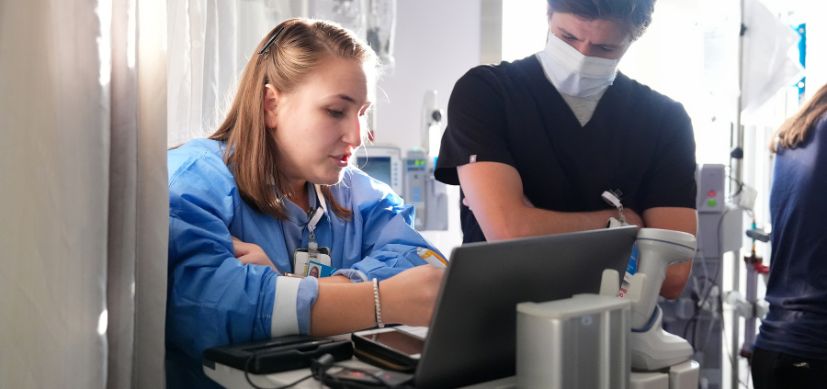Perspective on Single-Cell Analyses of Genetic Disease Models
Post Date: April 23, 2020 | Publish Date:
Multi-omics single-cell analyses of genetic disease models demonstrates the dominance of cell states in integrating the impact of mutations

Perspective written by H. Leighton Grimes, PhD
In the current age of single-cell analyses that are exploding the number of cellular populations, how should we understand the impact of disease causing mutations? Does the mutation affect all cellular populations similarly? Nope.
We sequenced patients with severe congenital neutropenia (SCN), screened the DNA changes in the Growth factor independent-1 (GFI1) transcription factor for functional defects, introduced these human DNA changes into the mice genome, and created the first mouse models of SCN with homeostatic dysgranulopoiesis. The mice also display profound sensitivity to neutrophil dependent pathogens (Candida and Staph).
Next, we had to create a single-cell transcriptome (CITE-Seq) and single-cell ATAC Seq reference for all of the states that normal cells encounter as they first specify and then commit to neutrophil granulopoiesis. NOTE: we adopted terms proNeu, preNeu and immNeu from a recent Ng + Hidalgo review (PMID: 30816340) to contribute to the unification of granulopoietic cell-state nomenclature.
Using our new tool cellHarmony we could subsequently capture cells from the neutropenic mice, align them into normal cell states, and automatically derive cell-state-specific gene expression and open-chromatin differentials. This helped us to understand that the major problem for GFI1-mutant myeloid progenitors was the failure to close GFI1-bound chromatin at a crucial juncture in specification, and a subsequent failure to open commitment-associated GFI1-bound chromatin.
We could genetically repair the specification two different ways, but defects in programming neutrophil functions during commitment persisted…the mice were still sensitive to Staph. In other words, we could fix specification to generate more neutrophils, but that did not automatically fix commitment steps.
So, we asked how this could affect kids with SCN, whose neutrophils are rescued by cytokine treatment (GCSF). We found that GCSF-treatment resulted in neutrophils that (similar to genetically rescued GFI1-mutant neutrophils) displayed defects in post-commitment programming of neutrophil effector functions.
In sum, our results using an integrated multi-omics single-cell approach reveal the dominance of cell-state-specific impacts of mutations (likely due to accompanying changes in the composition of transcription factors and chromatin accessibility at their target genes in each cell state), and underscore the importance of molecularly evaluating the impact of mutations and therapy within each relevant cell state.







